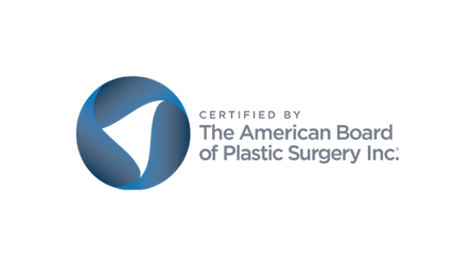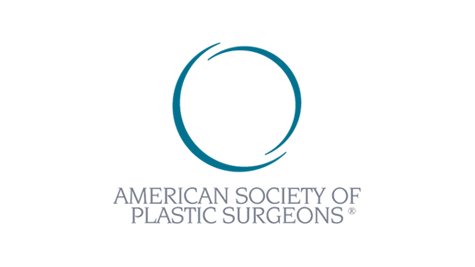Best Breast Augmentation in New York City
Natural breast augmentation surgery serves more than just enlarging a woman's breast size. It is a popular choice among women to improve their self-esteem and body image, whether they were born with smaller breasts or lost volume due to weight loss and aging.
Women who choose to have breast augmentation surgery often report feeling incredibly satisfied with their decision. This is because the surgery can result in a significant positive change in their body image and overall confidence. It's no wonder that breast augmentation has become one of the most popular cosmetic procedures among women. The boost in self-esteem and improved body image that patients experience can be truly life-changing.
What Is Breast Augmentation Surgery?
Breasts can lose volume due to various reasons like pregnancy, weight loss, or be underdeveloped, medically referred to as hypoplastic. Breast augmentation surgery is an effective solution, where implants filled with silicone or saline are placed under the breast tissue and chest muscle, enhancing the size, shape, and projection of the breasts. The procedure is usually performed under anesthesia, and the patient can resume most routine activities after wearing a supportive bra post-surgery.
Autologous fat grafting is another alternative to restore volume to the breasts. In this procedure, fat is removed from another part of the body through liposuction and then injected into the breasts to increase their size and enhance their shape. This option has the added benefit of using the patient's natural tissue, reducing the risk of complications and providing a more natural-looking result.
Who Is a Candidate For Breast Augmentation?
The ideal candidates for breast augmentation are women who have a good breast shape but wish to increase their breast volume and projection. Additionally, women who have lost volume due to weight loss or breastfeeding, as long as the overall shape and nipple position remain intact, can also benefit from breast augmentation. However, for those with breasts that sag or droop, with nipples and areolas appearing too low, a breast lift with or without an implant may be a more appropriate surgical option. It's not uncommon for women to have asymmetrical breasts or nipples that differ in size or position. In these cases, breast augmentation can be combined with other procedures to improve breast symmetry and proportions, providing more aesthetically pleasing results.
If you decide to use implants for your breast augmentation, here is what you need to know:
In general, there are two types of implants, saline, and silicone.
Saline Implants
Saline implants are made of a silicone shell filled with a sterile saltwater solution. They're FDA-approved for women aged 18 and above and come in a variety of sizes and shapes.
Some of the benefits of saline implants include:
They're less expensive than silicone implants
If the implant ruptures, the saline is harmlessly absorbed by the body
They can be adjusted after insertion to achieve optimal symmetry
Can be placed through a smaller incision
Silicone Implants
Silicone implants are made of a silicone shell filled with silicone gel. They're FDA-approved for women aged 22 and above and come in a variety of sizes and shapes.
Some of the benefits of silicone implants include:
They tend to feel more natural than saline implants
They're less prone to rippling or wrinkling compared to saline
They come prefilled and often need a larger incision with increasing volume
"Confidence is the best thing a woman can wear—breast augmentation can help bring that confidence to life.”
What implant size is right for you?
When considering breast augmentation, one of the most common questions asked is "What size implant should I get?" The answer is not straightforward as it depends on various factors, including your body type, existing breast tissue, desired look, and anatomy. Whether you have a smaller chest, a wider chest, narrow or angular breasts, the perfect implant size and shape for you will depend on your individual anatomy and the look you want to achieve. Breast implants are measured in cubic centimeters (cc), not bra sizes, and the same implant size can look different in two women with different body types. Selecting an implant that fits the width of your breast is crucial, as an implant that is too wide can look unnatural. Additionally, patients seeking a more natural look may want less projection than those desiring a highly augmented breast shape. Skin quality also plays a significant role, as heavy implants can stretch saggy skin. It is essential to consult with a skilled and experienced plastic surgeon, like Dr. Franck, who can measure your anatomical landmarks and characteristics to determine the ideal implant size and volume for you. This way, you can feel confident that you are making the right decision for your body.
What if you don’t want to use an implant and rather use your own fat to augment your breasts?
Autologous breast augmentation, also known as fat grafting, is a technique where fat is taken from one part of the body, typically the abdomen or thighs, and transferred to the breasts to increase their size and shape. This procedure is an alternative to traditional breast implants and can provide natural-looking results. Since the fat used is from the patient's own body, there is very little risk of rejection or allergic reaction. Autologous breast augmentation is a popular choice for women who want to avoid the use of implants and prefer a more natural approach to breast enhancement. However, there are unique limitations to breast augmentation with fat. Not all the fat that is being injected will remain. Fat grafting is often better as an adjunct procedure to provide more cleavage rather than a stand-alone breast augmentation. To learn more about this procedure, you should schedule a consultation with Dr. Franck and see if you are a possible candidate for autologous breast augmentation.
The Breast Augmentation Procedure
Breast augmentation surgery is typically performed under general anesthesia and can take anywhere from one to three hours, depending on any additional procedures such as a breast lift or nipple and areola reduction. In cases of severe asymmetry, the procedure may take longer. If the initial breast shape is very aesthetically pleasing and symmetrical, the procedure can often be completed in less than an hour
Here's what you can expect during the surgery:
Step 1: Incision
The surgeon will make an incision in one of three locations: under the breast, around the nipple, or in the armpit. The location of the incision will depend on several factors, including the type of implant, the desired size, and the patient's anatomy.
Step 2: Implant Placement
Once the incision has been made, the surgeon will create a pocket either under the breast tissue or under the chest muscle, depending on the desired outcome. The implant is then inserted into the pocket and adjusted to achieve the desired position and symmetry.
Step 3: Closing the Incision
Once the implant is in place, the incision is closed with sutures or surgical tape. The patient will then be taken to the recovery room to begin the healing process.
Breast Augmentation Recovery
Initial recovery from breast augmentation might take one to two weeks. You will have to limit heavy activity for a few days to weeks. Pain and discomfort is often very minimal and patient are expected to resume their daily routine very soon after surgeyr. Here are some tips to help you recover:
Take time off from work and other activities to allow your body to heal
Avoid strenuous exercise or heavy lifting for several weeks after surgery
Wear a supportive bra or compression garment to help reduce swelling and promote healing
Attend all follow-up appointments with your surgeon to monitor your progress and address any concerns
Breast augmentation scars
There are different methods and techniques for placing the incision. The most common are the inframammary incision, which is made in the crease under the breast; the periareolar incision, which is made around the edge of the areola; the transaxillary incision, which is made in the armpit; and the transumbilical incision. Dr. Franck prefers the breast crease as the incision is covered in a natural fold and will fade nicely over time. This method has a lower risk of complications compared to an incision around the nipple and also provides greater control for placing the implant underneath the breast tissue. The resulting scar is inconspicuous and falls into a natural shadow, making it difficult for both the patient and others to notice. The incision is typically 3-4cm in length and will heal with dissolvable stitches.
.
Choose the Right Plastic Surgeon
Board-certified plastic and reconstructive surgeon, Dr Franck trained at two prestigious Ivy League university hospitals. Recognized as one of New York's Rising Star Surgeons and a Castle Connolly Top Doctor, Dr Franck is also a Clinical Assistant Professor at Cornell University Hospital in New York.




Breast Augmentation FAQs
-
Breast implants are not designed to last a lifetime and may need to be replaced or removed at some point. However, with proper care and maintenance, most implants last between 10 and 20 years.
-
Breast augmentation surgery can affect breastfeeding, but the extent of the impact will depend on several factors, including the type of incision, the implant placement, and the patient's anatomy.
-
While breast implants are generally considered safe, they can cause health problems, such as implant rupture, capsular contracture, and breast implant-associated anaplastic large cell lymphoma (BIA-ALCL)
Proudly serving the NYC Tri-State area, including New York, New Jersey, Connecticut, and much more.

















